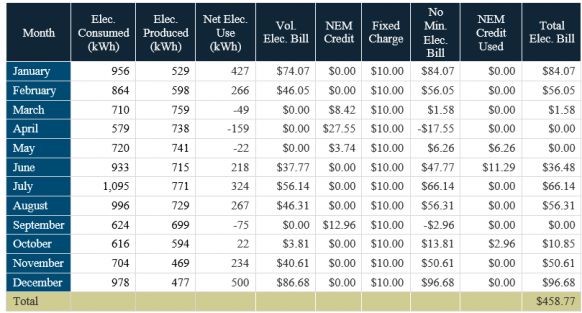In June, the solar energy industry was excited to learn that solar advocates and electric utilities had reached an agreement on solar policy in Massachusetts.
One of the changes House Bill 4185 would make to solar policy is subjecting all electric utility customers to a minimum bill. In a new report, The Minimum Bill as a Net Metering Solution, GTM Research explores the potential impact of the proposed Massachusetts minimum bill. This report excerpt explains how the minimum bill mechanism would work and presents one of our key findings: a minimum bill is preferable to a fixed charge for solar customers.
The minimum bill mechanism is a new approach that Massachusetts electric utilities hope will cover fixed costs while promoting solar, but without the same level of political rancor that fixed charges have spurred in places like Arizona. Based on channel checks and our reading of the legislation, our understanding is that a customer’s electricity bill would be calculated in the following manner under the minimum bill mechanism:
- Calculate the customer’s monthly net energy use.
- If the net energy use is positive, bill for the net energy use at the volumetric electricity rate.
- If the net energy use is negative, bill the customer for zero kWh used and calculate the excess net metering credit. The customer pays the minimum bill charge for the month and carries over any excess net metering credit.
- For the next month where net energy use is positive, apply any net metering credits down to the minimum bill charge. Carry over any remaining net metering credits.
In order to determine the impact of the minimum bill mechanism on a typical Massachusetts solar customer over the course of a calendar year, GTM Research analyzed the impact of a $10 minimum bill on an NStar customer with a 6.3-kilowatt rooftop solar system who has an energy consumption and production profile based on actual data from Genability. We assume a volumetric retail electricity rate of 17.33 cents per kilowatt-hour and a fixed distribution charge of $7 per month.
Under the $10/month minimum bill mechanism the solar customer would pay $434.77 for the year.

Source: GTM Research and Genability
Now imagine Massachusetts imposes a $10 monthly fixed charge on solar customers instead. In this scenario, the typical Massachusetts solar customer would pay $458.77 for the year’s electricity.

Source: GTM Research and Genability
A $10 fixed charge on solar customers would result in the typical Massachusetts solar customer paying $24 more each year.
The $24 difference is a result of the customer being charged an additional $3 ($10 fixed charge for solar customers minus the $7 monthly fixed distribution charge for all customers) in the fixed-charge scenario for each of the eight months the minimum bill charge is not triggered in the minimum-bill scenario. As a result, a minimum bill would likely be preferable to the typical Massachusetts solar customer, assuming the minimum bill is set at the same level as the fixed charge.
***
The report, available to GTM Research solar clients, also includes a comprehensive overview of how the proposed Massachusetts minimum bill mechanism would work and analyses on the impact of the minimum bill on a typical Massachusetts solar customer’s electricity bill, the minimum bill’s effect on residential solar project economics, and the impact of different size minimum bill charges. If you have any questions or would like to gain access to the report, please contact [email protected].



